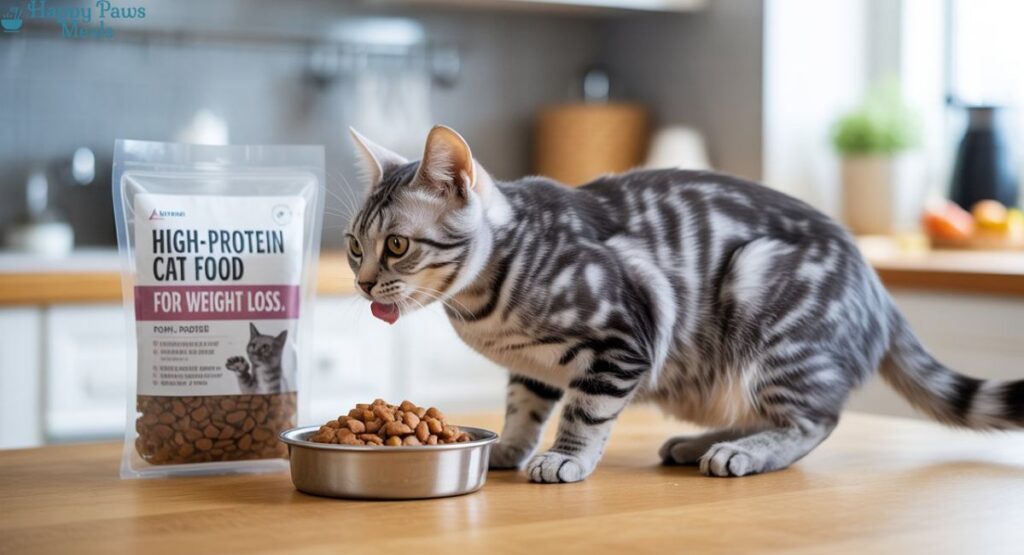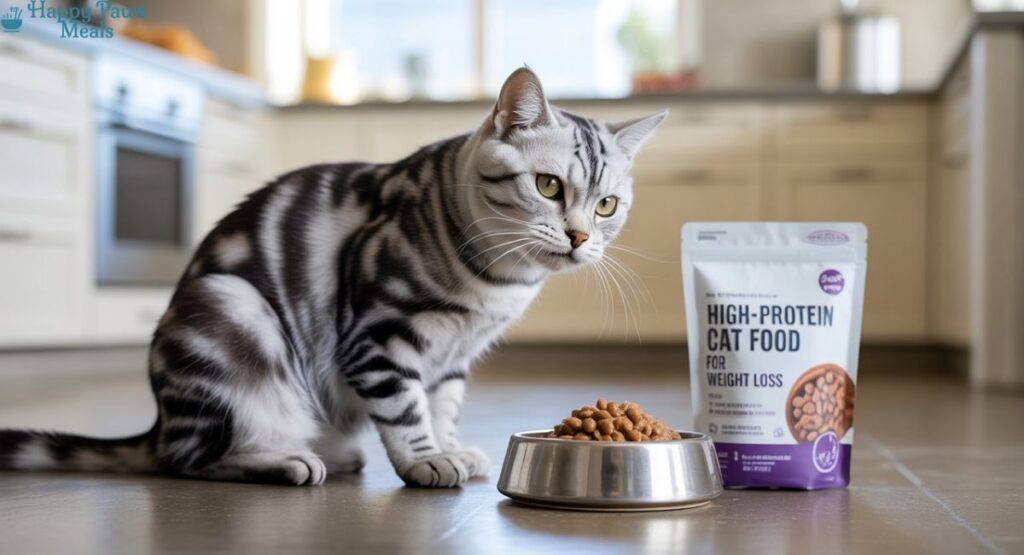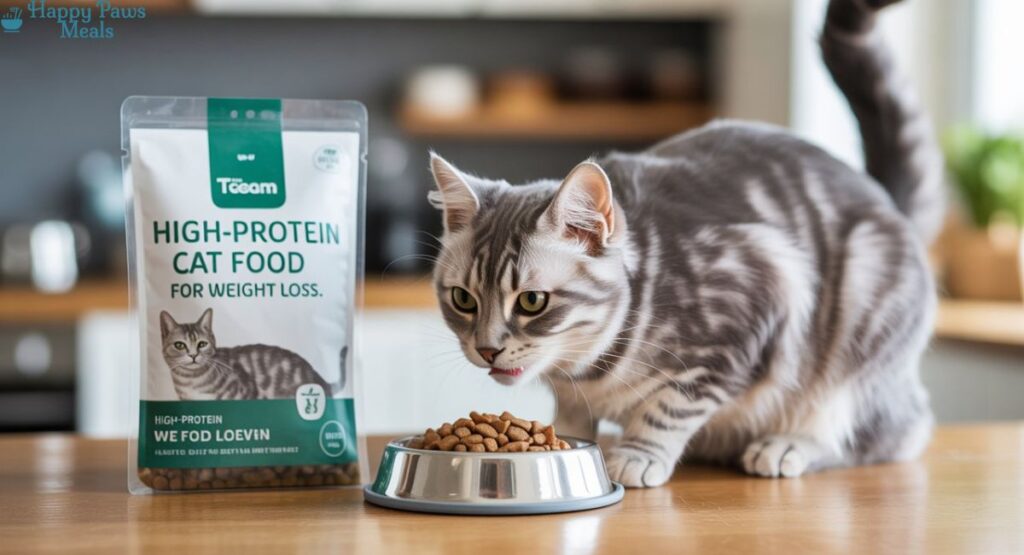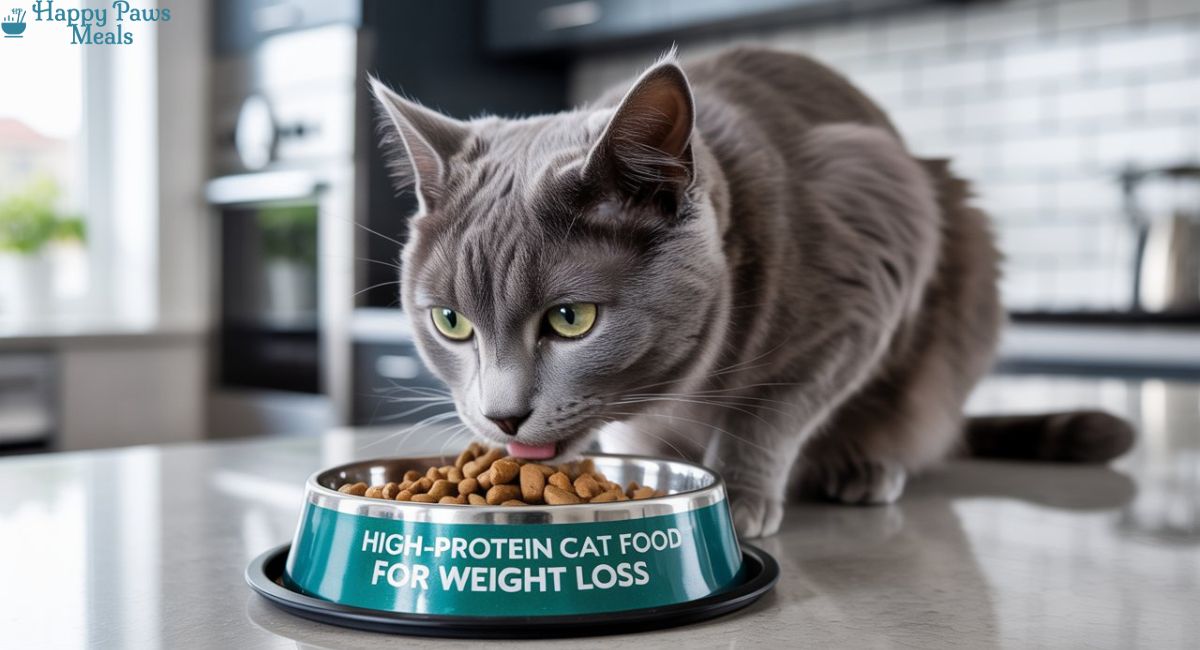Cats may be small, but when it comes to health, diet plays one of the biggest roles in their overall well-being. In recent years, high-protein cat food for weight loss has become one of the most talked-about trends among veterinarians and pet parents. With obesity rates rising in cats, the need for healthier diets that help reduce weight while maintaining lean muscle mass has never been greater.
In this guide, we’ll explore everything you need to know about high-protein cat food for weight loss—its benefits, how it works, feeding tips, recommended brands, risks, and FAQs. By the end, you’ll have a complete roadmap to help your feline friend achieve a healthier body and a happier life. Choosing the right high-protein cat food for weight loss ensures your cat gets lean muscle support while burning fat safely.
Why Cat Obesity Is a Growing Concern
Feline obesity is more than just a “cute chubby look.” It’s a serious health issue. Studies show that over 40% of domestic cats are overweight or obese. This extra weight can lead to:
- Diabetes mellitus
- Arthritis and joint pain
- Liver disease
- Heart problems
- Reduced lifespan
The problem often arises because of free-feeding dry kibble diets that are high in carbohydrates but low in protein. Cats, as obligate carnivores, are designed to thrive on protein-rich diets—not carb-heavy meals. That’s why high-protein cat food for weight loss is gaining popularity as the best solution to fight obesity naturally.
What Is High-Protein Cat Food?
High-protein cat food is specifically formulated with at least 40–60% protein content. Instead of filling meals with corn, wheat, or soy, these diets focus on meat, poultry, or fish as the primary ingredients.
Cats are obligate carnivores, which means their bodies thrive on protein. Feeding them high-protein cat food for weight loss not only helps reduce fat but also maintains muscle mass. This makes protein-focused diets one of the safest and most effective ways to manage a cat’s weight.

For weight loss, these diets usually include:
- High protein: To build lean muscle and maintain energy.
- Moderate fat: Provides satiety and supports skin/coat health.
- Low carbs: Prevents excess calorie intake and blood sugar spikes.
- Added fiber: Helps cats feel fuller for longer.
This approach helps cats lose weight gradually while preserving muscle mass, unlike low-protein, high-carb diets that often lead to muscle loss.
Benefits of High-Protein Cat Food for Weight Loss
Switching your feline to a protein-focused diet can have significant health benefits:
✅ Weight Reduction Without Muscle Loss – Protein preserves lean muscle, even as fat burns off.
✅ Boosts Energy & Playfulness – Cats on high-protein diets are more active, reducing lazy behavior.
✅ Improved Metabolism – Protein requires more energy to digest, slightly boosting calorie burn.
✅ Better Blood Sugar Regulation – Low-carb formulas help prevent insulin resistance and diabetes.
✅ Enhanced Coat & Skin Health – Amino acids from protein improve coat shine and skin texture.
✅ Satiety & Reduced Begging – Cats feel fuller after protein meals, leading to fewer overeating episodes.

How Does Protein Help with Weight Loss?
Cats are obligate carnivores, meaning their bodies are wired to extract nutrients from animal protein, not carbs. When fed high-protein cat food:
- Muscles are preserved, even during calorie restriction.
- Fat is burned for energy, instead of muscle tissue.
- Satiety hormones are triggered, so cats naturally eat less.
- Metabolism remains steady, preventing rebound weight gain.
In contrast, carb-heavy foods trigger blood sugar spikes and fat storage, making weight loss harder. When selecting high-protein cat food for weight loss, always check the label for real meat as the first ingredient.
Nutritional Profile of High-Protein Cat Food for Weight Loss
Typical breakdown:
- Protein: 40–60%
- Fat: 20–25%
- Carbs: <15%
- Fiber: 3–5%
- Moisture: 60–70% (if canned or raw)
This closely resembles a cat’s natural prey diet (mouse or bird), making it biologically appropriate.
Is High-Protein Cat Food Safe?
Yes—if chosen correctly. However, it’s not a one-size-fits-all solution.
- Safe for most healthy cats.
- Caution in kidney disease: High protein can strain weak kidneys, so consult your vet first.
- Gradual transition: Sudden diet shifts may cause stomach upset.

👉 According to AAFCO Cat Food Nutrient Standards, balanced high-protein diets must still meet minimum fat, taurine, and vitamin requirements.
Best High-Protein Cat Food Brands for Weight Loss (2026)
Here are some trusted picks:
1. Hill’s Science Diet Perfect Weight
- Vet-recommended for weight management.
- High protein, controlled calories.
2. Royal Canin Satiety Support
- Prescription formula for overweight cats.
- Contains added fiber for satiety.
3. Blue Buffalo Wilderness Weight Control
- Grain-free, rich in chicken protein.
- Includes L-carnitine for fat metabolism.
4. Wellness CORE Grain-Free Reduced Fat
- High-protein, low-fat formula.
- Probiotics for digestion.
5. Instinct Raw Boost Healthy Weight
- Combines kibble with freeze-dried raw.
- Grain-free, high-protein, satisfying taste.
Feeding Tips for Weight Loss
Consistency is key. Portion control, along with high-protein cat food for weight loss, helps prevent overeating and supports gradual fat reduction. This way, your cat stays healthy without feeling hungry all the time.
- Scheduled Meals vs. Free Feeding: Stick to 2–3 meals daily. ([Read: Feeding Hours for Cats])
- Portion Control: Use [Top Online Cat Food Calculators] to measure calories.
- Slow Transition: Mix old and new food for 7–10 days.
- Increased Playtime: Exercise helps burn extra calories.
- Treat Smartly: Use freeze-dried meat instead of biscuits.
Risks & Mistakes to Avoid
❌ Feeding too little protein → muscle loss.
❌ Ignoring portion control → overeating.
❌ No vet checkup → undiagnosed conditions.
❌ Switching diets too quickly → stomach upset.
FAQs About High-Protein Cat Food for Weight Loss
Q1: Can kittens eat high-protein food?
Yes, kittens thrive on high-protein diets but need more calories than adult cats.
Q2: How fast will my cat lose weight?
Healthy weight loss is 0.5–2% body weight per week. Faster loss is dangerous.
Q3: Is grain-free always high-protein?
No. Some grain-free foods still use starchy fillers like peas and potatoes.
Q4: Can I make homemade high-protein cat food?
Possible, but risky without vet guidance. Store-bought formulas ensure balanced nutrition.
Q5: What if my cat refuses high-protein food?
Try wet food, toppers, or gradually mixing it with their old diet.
Final Thoughts
High-protein cat food for weight loss is one of the most effective ways to help cats shed pounds safely while preserving muscle. By providing a diet closer to what cats naturally eat, you support better digestion, stable energy, and improved overall health. The safest and most effective method to help your cat slim down is choosing a vet-approved high-protein cat food for weight loss.
The key is choosing a vet-approved, AAFCO-compliant brand, practicing portion control, and combining the diet with play and exercise. With consistency and patience, your cat can achieve a healthier weight and enjoy a longer, more active life.

I’m Awais Manzoor, the writer behind HappyPawsMeals. With years of interest in pet care and nutrition, I research and review cat and dog food to provide reliable, easy-to-understand advice for pet parents.

